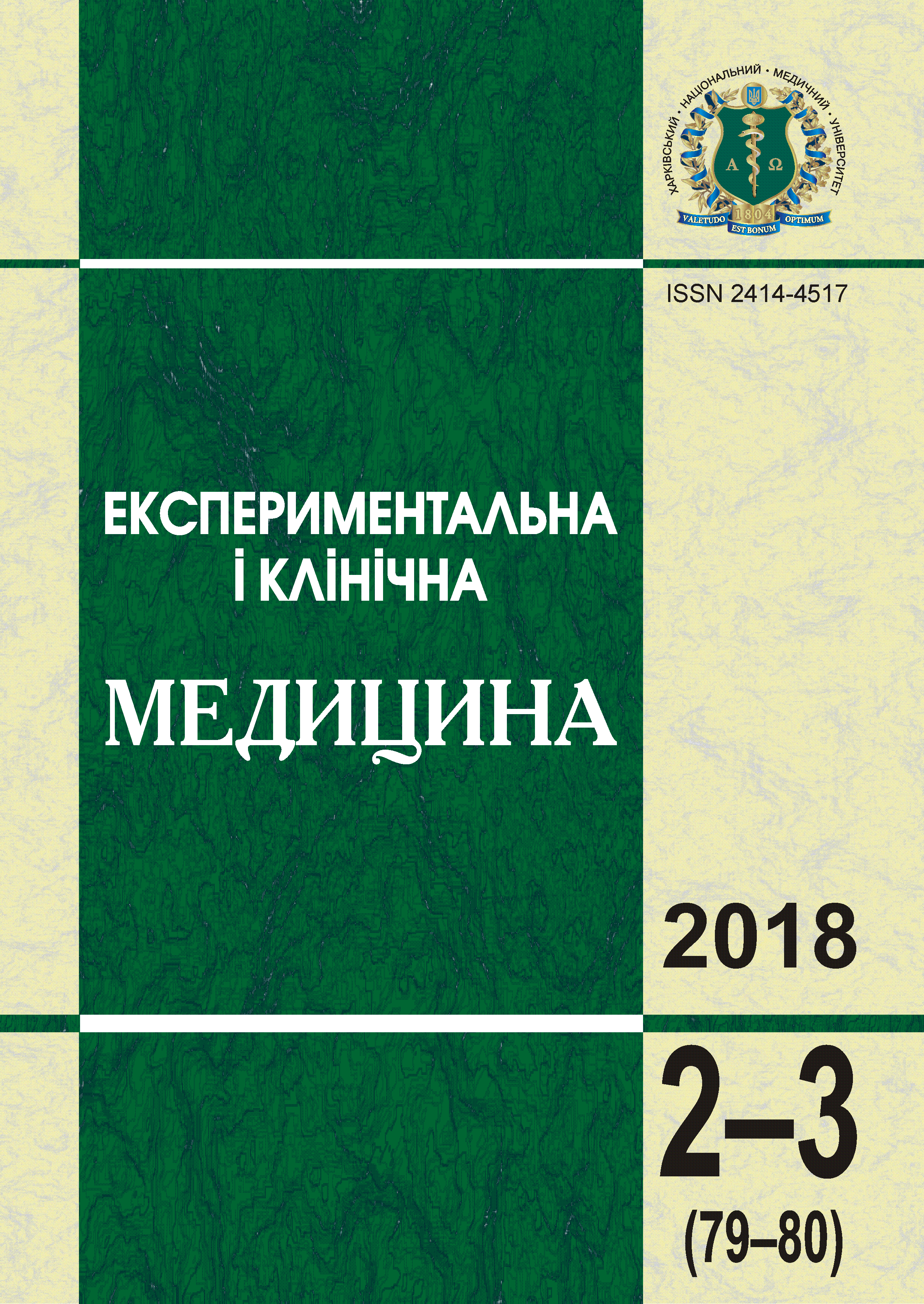Abstract
The authors presented the results of the organometrical parameters study of the bladder of full-term 38 fetuses and 40 newborns that developed under conditions of maternal preeclampsia of varying severity. It has been established that preeclampsia of mild severity does not affect the index of the length, width, and increases the index of the thickness of the fetuses and newborns bladder. Preeclampsia of moderate severity and severe preeclampsia lead to a decrease of the length, width and increase of the thickness of the offspring bladder. In newborns as compared to fetuses it was revealed the prevalence of the length, width and thickness of the bladder. During the analysis of the organometrical parameters percentage change of the bladder from the 37th to the 40th gestation week, it was noted that in mild maternal preeclampsia in fetuses the index of length and width increases, the thickness does not change, and all three parameters do not change in newborns; in preeclampsia of moderate severity in fetuses the parameter of width and thickness increases, lengths does not change, and in newborns all three parameters do not change; in severe maternal preeclampsia in fetuses the length does not change, the width and thickness increase, while in newborns the parameter of length and thickness increases, the width does not change.References
Borisov V.V. (2014). Narusheniia funktsii mochevoho puzyria [Dysfunction of the bladder]. Vestnik urolohii – Herald of urology, № 1, pp 50–63 [in Russian].
Pavlov A.Yu., Romikh V.V., Moskaleva N.G. (2007). Disfunkcii mochevogo puzyrja u detej: nekotorye voprosy diagnostiki i puti jeffektivnoj terapii [Dysfunction of the bladder in children: some diagnostic issues and ways of effective therapy]. Pediatriia – Pediatrics, vol. 86 (5), pp. 51–54 [in Russian].
Arenina N.Yu. (2011). Osobennosti mochevydelitelnoi funktsii ploda pri razlichnykh variantakh prenatalnoho techeniia pieloiektazii [Features of urinary function of the fetus in various variants of prenatal flow of pyeloectasis]. Extended abstract of candidate’s thesis. Saratov: Saratov [in Russian].
Wen J., Wang Q., Zhang X. (2007). Normal voiding pattern and bladder dysfunction in infants and children. Life Science Journal, № 4 (4), pp. 1−9.
Gromova A.M., Liakhovska T.Iu., Taranovska O.O., Mitiunina N.I. (2012). Zavisimost techeniia beremennosti, rodov i sostoianiia novorozhdennykh, nuzhdavshihsia v intensivnoi terapii [Dependence of the course of pregnancy, childbirth and the state of newborns who needed intensive care]. Neonatolohiia, khirurhiia ta perynatalna medytsyna – Neonatology, Surgery and Perinatal Medicine, vol. 2 (2 (4)), pp. 51–55 [in Russian].
Antipkin Yu.G., Volosovets A.P., Maidannik V.G., Berezenko V.S., Moiseenko R.O., Vyhovskaia O.V. et al. (2018). Stan zdorovia dytiachoho naselennia – maibutnie krainy (chastyna 1) [Child health condition – the country's future (part 1)]. Zdorovie rebenka – Child's health, vol. 13 (1), pp. 1–11 [in Ukrainian].
Marushko R.V. (2014). Faktory ryzyku ta prohnozuvannia rozvytku funkcionalnykh i hronichnyh zapalnykh zakhvoriuvan kyshechnyku v ditei rannioho viku [Factors of risk that predicted development of functional and hroni zaplyuvanih zahmyovan intestines in the early morning]. Perinatolohiia i pediatriia – Perinatology and Pediatrics, vol. 1 (57), pp. 51–55 [in Ukrainian].
Capra L., Tezza G., Mazzei F., Boner A.L. (2013). The origins of health and disease: the influence of maternal diseases and lifestyle during gestation. Italian journal of pediatrics, 39 (7): 1–12.
Trifonova E.A., Gabidulina T.V., Bukharina I.U., Stepanov V.A. (2016). Rol faktorov nasledstvennoi predraspolozhennosti v razvitii preieklampsii: obzor dannykh metaanalizov [The role of factors of hereditary predisposition in the development of pre-eclampsia: a review of meta-analysis data]. Molekuliarnaia meditsina – Molecular medicine, vol. 1, pp 8–14 [in Russian].
Deriuhina L.A., Horemykin I.V., Otpuschennikova Т.V. et al. (2016). Rasstroistva urodinamiki nizhnikh mochevykh putei u plodov v fetalnom periode [Disorders of urodynamics of the lower urinary tract in fetuses in the fetal period] Biulleten medicinskikh internet-konferentsii – Bulletin of medical Internet conferences, vol. 6 (2), pp. 285–290 [in Russian].
Sorokina I.V., Myroshnychenko M.S., Kapustnyk N.V., Arseniiev O.V. (2018). Patolohiia orhaniv sechovydilnoii systemy u dytiachoho naselennia Kharkivskoii oblasti: faktory ryzyku ta prohnoz rozvytku [Pathology of urinary system organs in the children's population of Kharkiv region: risk factors and developmental outlook]. Ukrainskyi zhurnal medytsyny, biolohii ta sportu – Ukrainian Journal of Medicine, Biology and Sport, vol. 3 (2 (11)), pp. 127–133 [in Ukrainian].
Sumenko V.V., Vozhoment O.V., Pykov M.I. (2013). Normativnyie ekhohraficheskiie pokazateli selezenki u zdorovykh detei Orenburhskoi oblasti i faktory, vliiaiushhiie na nikh [Normative echographic parameters of the spleen in healthy children of the Orenburg region and the factors that affect them]. Detskaia bolnitsa – Children Hospital, vol. 2, pp. 16–22 [in Russian].
Sapin M.R., Bocharov V.Ya., Nikitiuuk D.B., Satiukova H.S., Selin Yu.M., Spirin B.A. (2001). Anatomija cheloveka [Human anatomy]. M.R. Sapin (Ed.) (Vols. 1–2). Moscow: Meditsina, 640 p. [in Russian].
Andronesku A. (1970). Anatomiia rebionka [Anatomy of the child]. Bukharest: Meridiane, 364 p. [in Russian].
